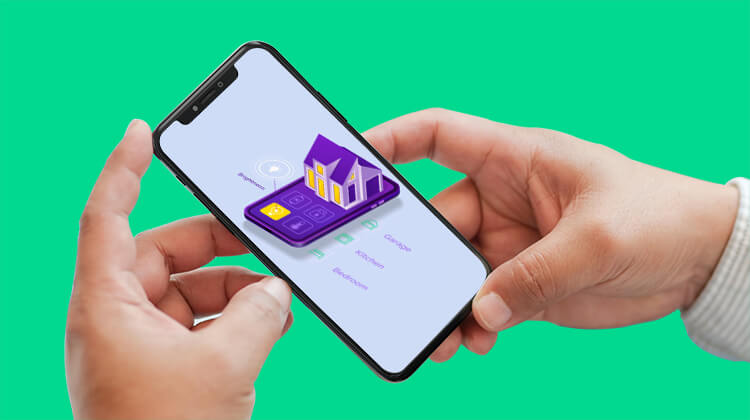Technologies to Enable Internet of Things

The explosion of the Internet of Things (IoT) is the result of complementary advancements in underlying hardware and software technologies.
In brief, IoT refers to the growing number of devices that are connected to the global Internet. Examples include smart-home products like the programmable thermostat Nest to industrial devices like temperature and humidity sensors.
IoT continues to transform our lives, with new IoT technologies and devices coming to market regularly. By providing real-time data, automation, and remote control of devices, IoT can lead to more efficient operations, better decision-making, and the development of new products and services.
However, it also raises important concerns about data privacy, security, and the management of the growing number of connected devices.
In this article, we’ll look at the convergence of four IoT technologies that have made the vast Internet of Things movement possible.
What is IoT?
The Internet of Things refers to the network of physical devices (the “things”) that are embedded with sensors, software, and other technologies to connect and exchange data with other devices and systems via the internet.
These connected devices can be anything from everyday household items like refrigerators and thermostats to industrial equipment and vehicles.
Increased Processing Power
General-purpose CPUs have gradually replaced microcontrollers in devices, fueled by the decreasing CPU size, cost, and power requirements.
This transition to CPUs is critical because CPUs can do something microcontrollers can’t—run operating systems with complete networking stacks and support for popular programming languages.
Increased CPU processing power has had a significant impact on IoT technology in several ways.
Improved Device Performance
IoT devices have become more capable and versatile due to increased CPU processing power. This has allowed for more complex computations to be performed directly on the device, enabling real-time data analysis and more sophisticated applications. For example, a more powerful CPU can handle advanced image recognition, natural language processing, and sensor fusion, enhancing the functionality of IoT devices.
Edge Computing
With more processing power, IoT devices can perform more data processing at the edge, closer to the data source, without the need to send all data to the cloud for analysis. This reduces latency, conserves bandwidth, and enhances the responsiveness of IoT applications.
Energy Efficiency
Advanced CPUs are designed to be more power-efficient while still providing high performance. This is crucial for IoT devices, which often run on battery power. More efficient CPUs can help extend the battery life of IoT devices and reduce the need for frequent recharging or replacement.
Enhanced Security
IoT devices are vulnerable to security threats, and more powerful CPUs can be used to implement stronger security measures, such as encryption and authentication protocols. These security features help protect data and harden IoT systems against intrusions.
Scalability
Increased CPU processing power allows for more scalable IoT solutions. Organizations can connect and manage a larger number of devices, process more data, and support more complex applications without being constrained by processing limitations.
Faster Response Times
IoT devices with faster CPUs can make quicker decisions and responses based on the data they collect. This is essential for applications that require real-time decision-making, such as autonomous vehicles, industrial automation, and smart grids.
Innovation
Increased CPU processing power has enabled the development of new and innovative IoT applications. These applications can leverage the processing capabilities of IoT devices to create unique and value-added services in various domains, from healthcare to agriculture to smart homes.
Overall, the increased CPU processing power has expanded the possibilities and capabilities of IoT technologies, making them more versatile, efficient, and secure.
Small-footprint OS and Protocols
As the performance of embedded platforms rose, the hardware requirements for lightweight versions of mainstream operating systems like Windows and Linux (and the BSD family) either dropped or held steady.
As these operating systems displaced embedded stalwarts like QNX and VxWorks, these invaders each brought their massive software ecosystems—and a large pool of developers—with them.
A similar dynamic was taking place on the protocol side as stripped-down TCP/IP stacks were written for resource-scarce embedded platforms and new protocols like MQTT were written specifically for the limited processing power and bandwidth of these devices.
Wireless Communication
Just as WiFi has gotten faster with each new addition to the 802.11 class of protocols, the connectivity options for low-power devices have been expanding in the industrial and consumer electronics markets: Zigbee, Xbee, mesh networking, cellular communications, Bluetooth, etc.
Cloud Computing Platforms
The improvements in processing power, OS, and wireless communication converged to make it possible for almost anything to transmit data to or be controlled from the Internet—with little added cost to the base device.
Bringing connectivity and processing power to all these devices was only the first step. Organizations also needed to collect, analyze, and make sense of the resulting firehose of data before they could actually use it.
Commercial cloud IoT platforms like Amazon IoT and Microsoft’s Azure IoT Suite provide the massive bandwidth, data storage, processing power, and software tools needed to fully benefit from a large IoT deployment.
These clouds are the meeting point between the data streaming from IoT devices and the applications that display and analyze that data.
Both IoT cloud platforms work in similar ways.
If that device is running an operating system (like Windows or Linux), a client program (based on a vendor-supplied SDK) is installed on the device.
Once that client program is installed on the device, that device can connect directly to the customer’s account on the cloud via the Internet.
If the device isn’t connected to the Internet, it can connect indirectly through another “gateway” device which in turn is connected to the cloud. These gateway devices can also be used to attach “dumb” microcontroller-based devices to the cloud.
The IoT cloud component uses encryption to secure all communication to and from the devices, as well as to authenticate each device. Amazon’s IoT platform, for example, uses X509 certificates.
The continuous stream of device data is then displayed, stored, filtered, and analyzed by that vendor’s other cloud offerings, like Microsoft’s Azure Machine Learning and Azure Stream Analytics.
From the cloud, the customer can manually control the connected devices, or build applications that automate certain actions based on the received data from the devices.
Choosing an IoT Platform
Here’s what to look for when selecting an IoT platform vendor.
Accessibility: How reliable is this cloud platform? Do they offer redundancy?
Security: How strong is the encryption of the data to and from our devices? Are the latest encryption standards supported? Is the data encrypted all the way from the cloud to the device itself? Does this platform support per-device permissions?
Support for your specific devices: Do the client programs and SDK’s support the CPU and OS combinations present on our deployed devices? How well does their software support our “dumb” devices which don’t run an OS?
Control of your own data: How vulnerable would we be to vendor lock-in? Does this platform use proprietary or open standards for storing our data?
IoT Is Here to Stay
There’s no doubt that IoT technology has transformed our lives and businesses.
Commercial and industrial applications can now leverage real-time data, automation, and the remote control of devices to streamline operations, improve decision-making, and develop new products and services.
Deployed wisely, IoT technologies can advance the most important business aspect of all: your bottom line.

